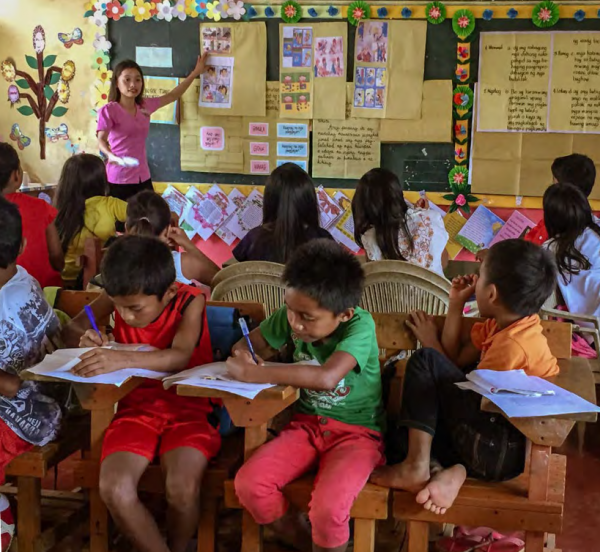
Review of the Multigrade Program in the Philippines
Since 1993, the Multigrade Program in Philippine Education (MPPE) has significantly contributed to the Department of Education’s (DepEd) need to democratize access to education while ensuring its quality in around 19% of public elementary schools in isolated, underserved, and sparsely populated communities in the Philippines.
In 2016, DepEd instituted its Basic Education National Research Agenda which identified the review of the MPPE as a research priority to determine if it is serving its intended purposes and to inform decisions for policy formulation and programme improvement. As a response, under a tripartite agreement established in 2017, SEAMEO INNOTECH worked with UNICEF and DepEd to identify key steps in advancing the implementation of MPPE. One of the components of the collaboration involves a program review to present the overall status of the MPPE as a modality of delivering basic education. Its Summary Report has been recently published on the INNOTECH website.
(Read: A Review of the Current Situation and Practices of Multigrade Schools in the Philippines)
The review was undertaken to accomplish four specific objectives. First, it aims to assess how well the MPPE was implemented in line with existing standards and policies of DepEd. Second, to identify factors that contribute and hinder in achieving the goals of MPPE. The review also aims to describe the contribution of the Multigrade program to student learning and school quality. Lastly, it intends to examine the role of the program in improving access to quality education in disadvantaged school communities.
Through a series of focus group discussions, national survey of multigrade schools and schools divisions, case studies, comparative analysis, and documentary analysis, the study shows that the MPPE implementation was generally compliant with existing standards and policies. However, the extent to which multigrade schools complied to these policies vary due to the local context and experiences of multigrade schools. A more flexible policy seems to be necessary to cater the unique conditions of the communities where the multigrade program is implemented.
In terms of factors affecting the achievement of MPPE goals, innovative instructional strategies, authentic assessments, parental and community engagement, the strong commitment of multigrade teachers, and enabling school leadership were recognized as contributing factors. On the other hand, achieving MPPE goals is said to be constrained by inadequate instructional support from school heads and supervisors, issues concerning multiple roles assigned to multigrade teachers, and the absence of a responsive monitoring and evaluation system specific for multigrade implementation.
Amid the challenges, the multigrade program proved its contribution to student learning. Through the comparison of learners’ results in various assessment tests, multigrade learners are seen to be performing at par with learners in a single grade classroom setting. Even outperforming some monograde learners in assessment tests for language, mathematics, and social studies.
The multigrade program was seen as a practical solution to address barriers to education such as access and inclusion. It is a reasonable learning delivery especially in remote, isolated, low-resourced, and underserved communities as teachers provide different but appropriate activities to the learners based on their individual developmental level. This allows teachers to empower and engage the learners by providing multiple ways to learn.
While the multigrade program has been proven as an effective learning delivery mode, there are still a lot of areas that may be improved, particularly in policies and program implementation.
Know more about the Multigrade Program in the Philippine Education review through this video





